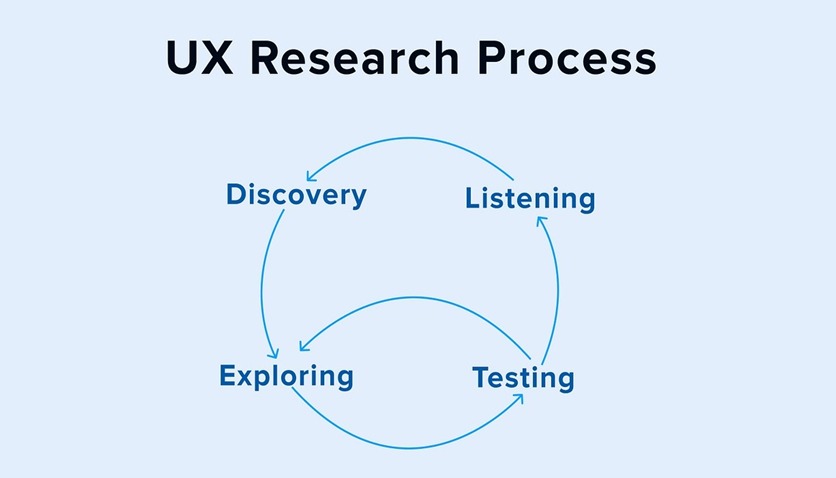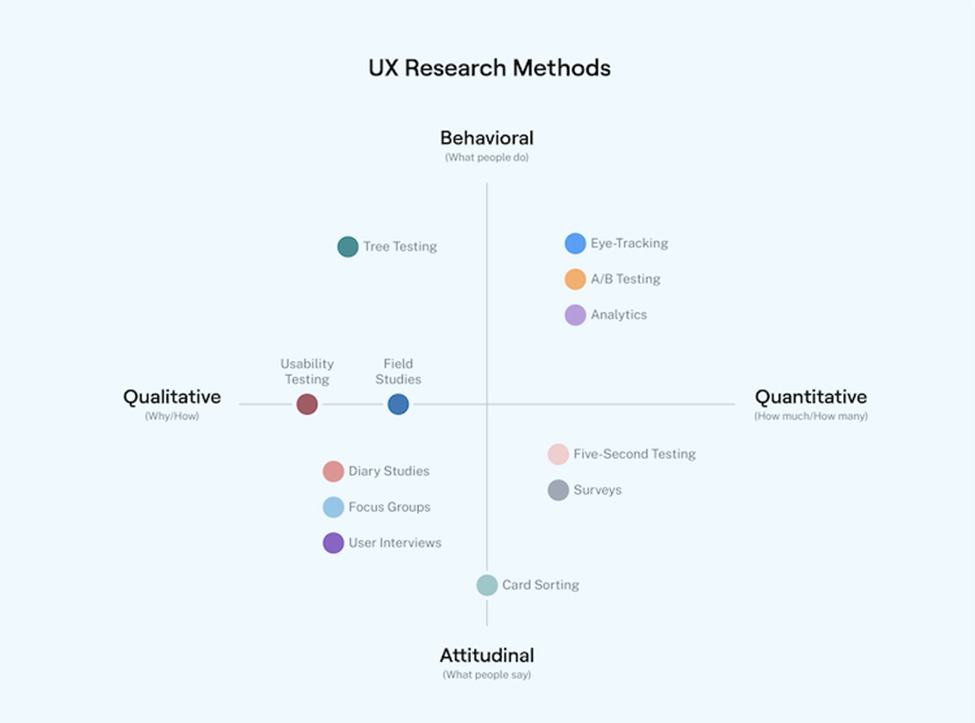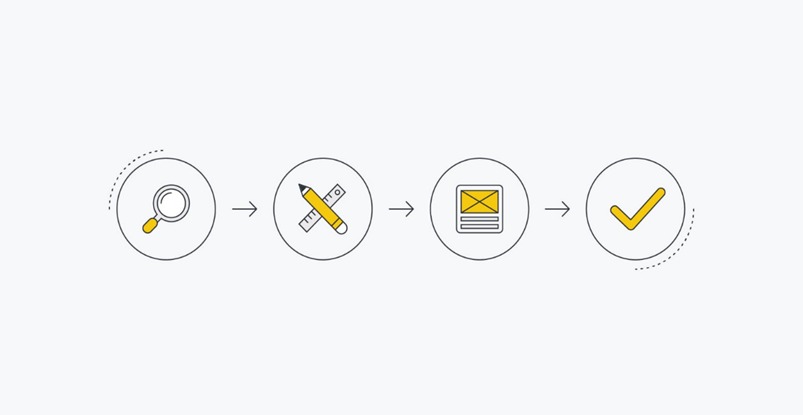User experience research is a crucial component of the human-centered design process and an essential part of creating solutions that meet user expectations and deliver value to customers. This comprehensive guide to UX research dives into the fundamentals of research, importance of UX research and its various methods.
What is UX Research?

User experience research, or UX research, is the process of gathering insights about users’ behaviors, needs, and pain points through observation techniques and feedback methodologies. It’s a form of user research that looks at how users interact with your product, helping bridge the gaps between what you think users need and what they actually need.
- The goal of UX research is to understand your users and gain context and perspectives to help make informed decisions and build user-centered products.
- It’s an essential part of designing, developing, and launching a product that will be an instant hit—but it should also be used throughout the product’s lifecycle post-launch to keep updated, and ensure new features are relevant to your audience.
Is UX research same as the user research?
The terms ‘user research’ and ‘UX research’ are often used interchangeably, but they do differ, User research is the parent of UX research.
User research is broader research that specifically focuses on understanding user needs, behaviors, demographics and sentiments to inform UX decisions.
UX research is more about knowing user’s experiences with a product or a service. UX research considers how they interact with, respond to, and feel about your product or a service.
In both cases, the overarching goal is to get to know your users, understand what they need from your product, and gain context to help make informed decisions.
Why conducting UX Research is important?
User research is very important in designing. It helps us avoid designing based on what we think instead of what users actually want. UX research helps reduce and mitigate the risk of building the wrong thing or building the right thing in the wrong way. Here are some key reasons why UX research is important:
- User-Centered Design: UX research helps in creating products and services that are centered around the needs and preferences of the users. This ensures that the end result aligns with user expectations and is more likely to be adopted and appreciated.
- Identifying User Needs: Through user interviews, surveys, and other research methods, designers can identify the specific needs, goals, and pain points of their target audience. This information is essential for developing solutions that truly address user requirements.
- Improving Usability: Understanding how users interact with a product allows designers to optimize its usability. This involves making sure that the interface is intuitive, navigation is straightforward, and tasks are easy to accomplish.
- Reducing Development Costs: By identifying issues and making necessary adjustments early in the design process, UX research can help prevent costly redesigns and changes after the product is already developed. This saves both time and resources.
- Enhancing User Satisfaction: A positive user experience leads to higher user satisfaction. Satisfied users are more likely to continue using a product, recommend it to others, and remain loyal to the brand.
- Increasing Conversion Rates: For websites and applications, a good user experience can significantly impact conversion rates. Whether the goal is to make a purchase, sign up for a service, or complete another action, a positive UX can increase the likelihood of users taking the desired actions.
- Staying Competitive: In today’s competitive market, user experience can be a key differentiator. Products and services with superior UX are more likely to stand out and attract and retain users compared to those with subpar experiences.
- Informed Decision-Making: UX research provides data-driven insights that guide decision-making throughout the design and development process. It helps teams make informed choices based on user feedback rather than relying on assumptions.
- Accessibility and Inclusivity: Understanding the diverse needs of users, including those with disabilities, helps in creating products that are accessible to a wider audience. This fosters inclusivity and ensures that everyone can benefit from the product.
- Iterative Improvement: UX research is an ongoing process that supports iterative design. By continuously gathering feedback and making improvements, products can evolve to meet changing user needs and expectations over time.
What happens if you don’t do UX Research?
“Neglecting user research may put the organization at a disadvantage in the long run.”
So, what might be the price of not doing proper user research?
• The product has great features that don’t solve the user’s problem.
• The product isn’t user-friendly as false assumptions are baked into the form and function of the product.
• The product causes confusion for the user.
Types of UX Research:
- Moderated and unmoderated
- Remote and in-person
- Generate and evaluate.
- Qualitative and quantitative
- Behavioral and attitudinal
The most common types of UX Research:
- Qualitative and quantitative
- Behavioral and attitudinal
- Generate and evaluate.
Every individual research method falls under these types, which reflect different goals and objectives for conducting research.
Here’s a quick overview:

Qualitative method vs Quantitative method:
Qualitative research focuses on capturing subjective insights into users’ experiences. It aims to understand the underlying reasons, motivations, and behaviors of individuals.
- One on One Interviews:
• Contextual Enquiry/Directed Interviews: Where the researcher asks specific questions to the users and attempts to compare responses with other users.
• Non-directed interviews: Where the researcher attempts to have more of a general discussion with the user(s).
- Ethnographic Research: Observes the user(s) in their own environment to understand how they approach certain aspects and accomplish certain tasks.
- Focus Groups: A focus group is a moderated discussion that typically involves 5 to 10 participants.
Through a focus group, you can learn about users’ attitudes, beliefs, desires, and reactions to concepts.
Quantitative method:
Quantitative research, on the other hand, involves collecting and analyzing numerical data to identify patterns, trends, and significance. It aims to quantify user behaviors, preferences, and attitudes.
- Surveys: A set of questions used to collect topic-specific information from a representative sample of your target audience. Since the surveys can be relatively inexpensive, executed quickly, and gather a large set of information on a wide range of topics.
Types of surveys:
- Online
- Offline
Attitudinal vs. behavioral
- Attitudinal research is about understanding users’ attitudes, perceptions, and beliefs. It delves into the ‘why’ behind user decisions and actions. It often involves surveys or interviews where users are asked about their feelings, preferences, or perceptions towards a product or service. It’s subjective in nature, aiming to capture people’s emotions and opinions.
- Behavioral research is about what users do rather than what they say they do or would do. This kind of research is often based on observation methods like usability testing, eye-tracking, or heat maps to understand user behavior.
Generative vs. evaluative
- Generative research is all about generating new ideas, concepts, and insights to fuel the design process. You might run brainstorming sessions with groups of users, card sorting, and co-design sessions to inspire creativity and guide the development of user-centered solutions.
- Evaluative research focuses on assessing the usability, effectiveness, and overall quality of existing designs or prototypes. Once you’ve developed a prototype of your product, it’s time to evaluate its strengths and weaknesses.
Research techniques for UX Research and when to use them?
There are various UX research techniques, each method serves a specific purpose and can provide unique insights into user behaviors and preferences. In this section, we’ll highlight the most common research techniques you need to know.
| Research technique | Description | When to use it | Best for gathering |
| User interviews | One-on-one open-ended and guided discussions | Start and end of your project | Qualitative Generative |
| Field studies | Observe people in their natural environment | All stages | Qualitative Behavioral |
| Focus group | Group discussions facilitated by a moderator | Start and end of your project | Qualitative Generative |
| Diary studies | Users keep a diary to track interactions and experience with a product | Start of your project | Qualitative Evaluative |
| Surveys | Asking people open or closed questions | All stages | Qualitative Quantitative Attitudinal Generative Evaluative |
| Card sorting | Users sort information and ideas into groups that makes sense to them | Start of your project | Qualitative Generative Attitudinal |
| Tree testing | Assess the findability and organization of information as users navigate a stripped-down IA | Start of your design or redesign process | Quantitative Behavioral Evaluative |
| Usability testing | Users perform a set of tasks in a controlled setting | All stages | Qualitative Behavioral Evaluative |
| Five second testing’s | Collect immediate impressions within a short timeframe | During initial ideation and throughout design | Attitudinal Evaluative |
| A/B testing | Compare two versions of a solution | All stages | Quantitative Evaluative |
| Concept testing | Evaluate the feasibility, appeal, and potential success of a new product | During initial ideation, design, and before launch | Qualitative Generative |
When should you conduct UX research?
- Before developing the product
This is when you need to conduct the most extensive and detailed part of your research. During this phase, you’ll want to conduct generative research to get to know exactly:
- Who your user is?
- The types of problems they’re facing (and what kind of product they want to solve them)
- What their expectations on a product or service like yours are
- What they like or dislike about your competitors
- Where they currently go to solve the mentioned problems
- What needs to happen for them to change companies (if they’re using a different product)
You can use a variety of UX research methods like focus groups and surveys to gather insights during this stage.
- When you want to validate your decisions
- This is the point where you’ll run through a few cycles of researching, building, and iterating, before launching your product.
- Conduct research regularly while developing and building your product to see if you’re headed in the right direction.
- Gather qualitative insights on user sentiment through surveys or focus groups.
- Test your wireframe or sketches to get quantitative answers in the form of clicks, heatmaps.
- Use card sorting to generate ideas, tree testing to assess IA, or prototype testing to assess the usability of a beta version.
- To evaluate product accessibility
- Your product will be used by a multitude of diverse, unique users. Your research participants should be representative of your real audience, which means including all usage scenarios and user personas. Usability testing is one form of UX research that can be used here to ensure your product works for all its users, regardless of ability or need.
- Once your product is alive
- Research doesn’t end once you push your platform to production. Conduct Live Website Testing to evaluate how well your product is meeting your users’ expectations and needs.
- Testing your live website also allows you to see how your users interact with your design in a real environment, so you can identify and solve mistakes fast. Pay close attention to loading times, error messages, and other quantitative data that may indicate bugs.
Conclusion
Investing in UX research is an investment in the success and longevity of a product. It is the bridge that connects creators with their audience, enabling the development of products that not only meet but exceed user expectations. Research helps identify usability problems, gather feedback on design concepts, and validate design decisions. This ultimately benefits businesses by improving the product, brand reputation and loyalty. A good user experience provides a competitive edge and reduces the risk of product failure.

